The vanity is typically the focal point of any bathroom renovation due to its immense visual and functional impact. Not only does it provide valuable storage, but it also sets the tone for the entire décor.
It is an essential element that should be chosen with care. That’s why it’s vital to choose the right wood for your vanity.
But with so many options available, it can be overwhelming to know where to start.
In this article, we’ll take a closer look at some of the best woods for bathroom vanities including their advantages and disadvantages so you can make an informed decision.
Whether you’re going for a traditional, rustic, or modern look, we’ve got you covered. Let’s dive in and find the perfect wood for your bathroom vanity!
What is a Bathroom Vanity?
Have you ever walked into a bathroom and felt instantly drawn to the vanity? That’s the power of well-designed furniture.
A bathroom vanity is more than just a piece of furniture to store your toiletries. It is the focal point of the room and creates anchor points for your interior design.
At its most basic level, it is a cabinet that sits below a sink and includes a countertop and possibly a mirror. But it can also include additional features such as built-in shelves and lights. A vanity can be freestanding or built-in, and its benchtop can be made of various materials such as granite, marble, or even laminate.
Vanities provide space for all bathroom essentials. No more cluttered countertops or digging through drawers for your toothbrush.
Considerations When Choosing The Right Wood For Bathroom Vanity
When selecting the ideal wood for your bathroom vanity, there are a few things to consider. First and foremost, durability is crucial.
Bathrooms are often high-humidity environments; the last thing you want is for your furniture to warp or rot. That’s why hardwoods are superb choices. Moisture-resistant properties make these wood types an excellent choice for the bathroom.
On top of that, they boast an appearance that can add a luxe element to the space. Softwoods like pine and cedar may not be the best options as they are not as resistant to warping and rotting.
Additionally, the aesthetic of your bathroom is something you should think about carefully. For a modern look, light-colored wood may be perfect. If you’re looking for a more traditional style, then it might be better to choose a darker hue.
What Kind of Wood Do You Use For a Bathroom Vanity?
If you’re looking to give your bathroom an upgrade, selecting the right kind of wood for your vanity is an essential part of the process.
From classic mahogany to strong maple, the range of options available means there’s something out there for everyone – no matter what kind of look you’re after.
Check out these top wood types to help make deciding easier!
1. Solid Wood
Solid wood bathroom vanities are the epitome of luxury and durability. A solid wood vanity is one of the wisest investments a homeowner can make as it can stand the test of time with adequate care and maintenance.
They are often more reliable and have better fire resistance compared to other materials when facing exposure to the elements. This is due to their condensed and intricate structure.
7 Best Solid Wood For Bathroom Vanity
1. Maple Wood
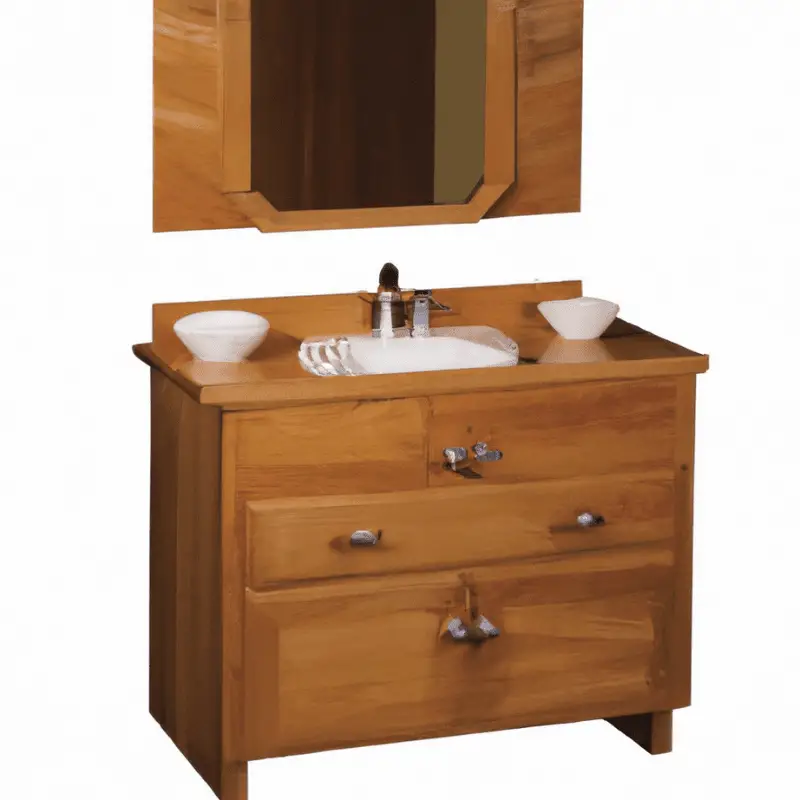
Maple is one of the best options for a bathroom vanity due to its natural beauty and durability. Not only is it durable and long-lasting but its reddish tint gives it a timeless beauty that is sure to enhance any bathroom aesthetic.
The natural grain patterns add a unique touch of character to your vanity so it stands out. This adds a touch of character to it that you won’t find anywhere else. Plus, the strength of the material ensures that it can withstand the daily wear and tear of a busy bathroom without showing signs of aging.
Imagine stepping into your bathroom and being greeted by the warm, inviting tones of a maple vanity. There is the satisfaction that comes with knowing that not only does it look stunning but it’s also built to last.
Cons
2. Cherry Wood
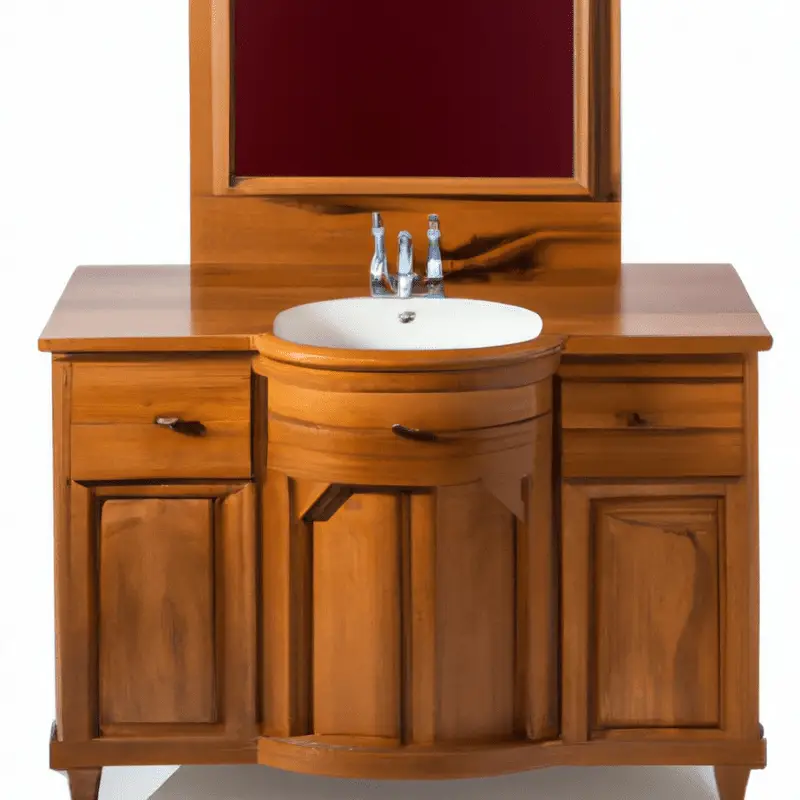
Cherry wood bathroom vanities are the perfect combination of form and function. They give you a practical yet aesthetically appealing solution to your needs. Their smooth finish makes them very easy to clean and they add a unique touch to any home’s decor while also being incredibly useful.
The beautiful wooden texture can bring warmth and comfort to your bathroom making it more inviting and cozy. Cherry wood’s inviting hues will bring sophistication and timelessness to any bathroom space.
Cons
3. Rubberwood
Rubberwood also known as Hevea wood is a tightly-grained and dense wood that is derived from the Pará rubber tree. The rubber tree is grown primarily for its rubber sap which is used to produce rubber products.
Once the tree reaches the end of its latex-producing life (usually around 32 years), the wood is harvested and used for a variety of purposes.
Due to its density and tight grain, rubberwood is known for its durability. The wood is easy to work with and takes finishes well so it’s popular for furniture and cabinetry.
Additionally, rubberwood is a sustainable resource as it is made from the leftovers of the rubber tree farming industry; it is an eco-friendly option.
Cons
4. Mahogany
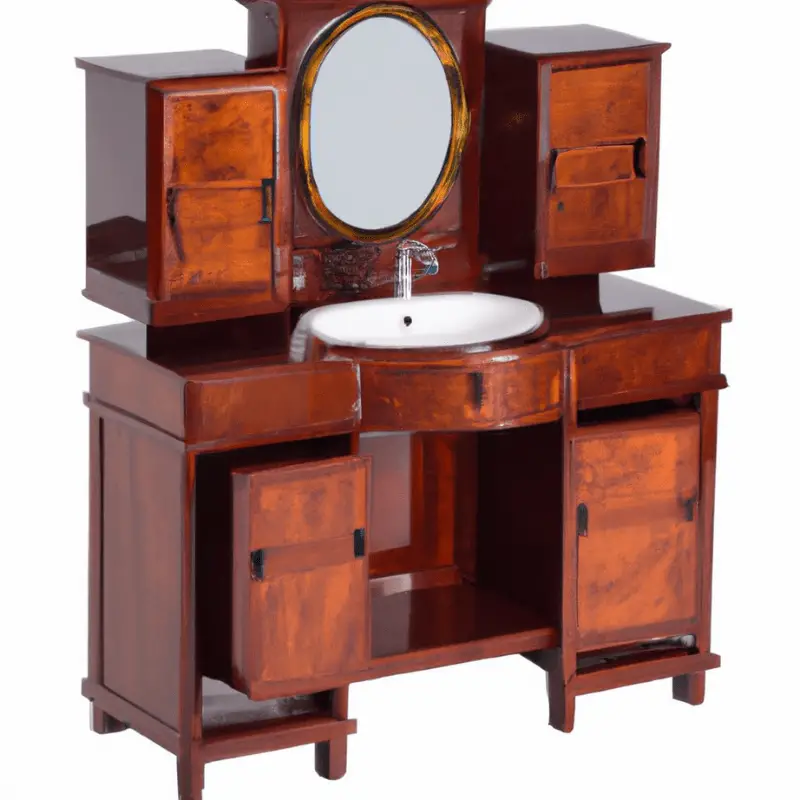
It’s one of the most enduring woods for moist areas such as a bathroom. Mahogany wood’s natural resistance to moisture makes it a perfect fit for humid spaces. But it’s not just about that, the wood gives your bathroom a real unique and luxurious feel because it is the epitome of luxury and class.
Mahogany wood is appreciated for its warm and deep hues which make it an excellent choice when you are looking to add a touch of sophistication to any project. Not only does it look great, but it’s also known for its durability, giving your space a unique yet timeless look.
Cons
5. Birch Wood
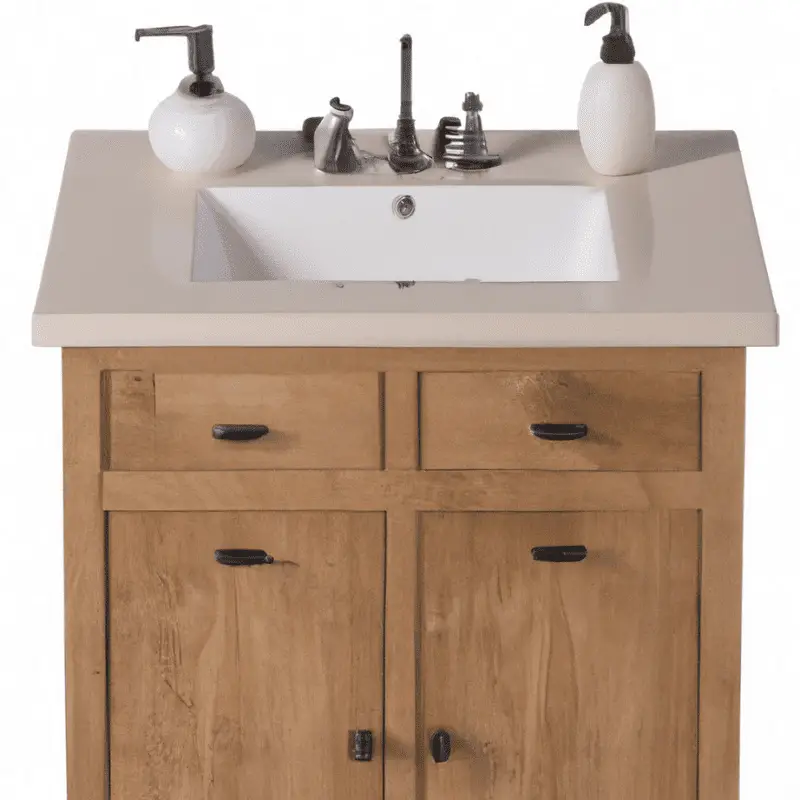
Birch wood gives you a modern aesthetic and can be buffed to a breathtaking luster. It’s a great wood if you want a striking look without compromising on quality. The tight grain pattern of birch wood makes it resistant to warping and shrinking ensuring that your vanity will remain stable and sturdy. And with proper care and maintenance, that stunning sheen will shine for years to come.
Birch vanity is a great option for those wanting something that effortlessly complements the design of their bathroom. Its neutral color makes it suitable for most styles and designs, allowing you to create a cohesive look. The best part about using birch for your bathroom vanity is its versatility. Whether you’re going for a traditional or modern aesthetic, birch can be stained or painted to match any design scheme.
Cons
6. Teak Wood For Bathroom Vanity
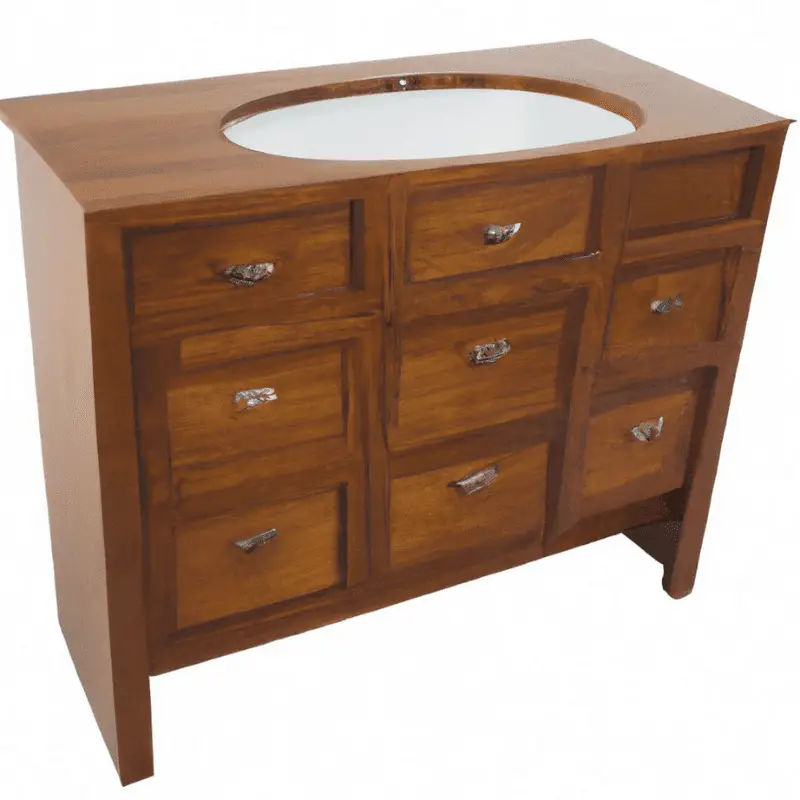
The wood’s natural oils and tight grain pattern make it less prone to absorbing moisture, which in turn makes it less susceptible to mold and mildew growth.
Formulated to be rot-proof, your exotic wood furniture can withstand the daily wear and tear of any bathroom environment and will look amazing for years to come. Plus, the natural oils in teak wood make it resistant to bacteria and other germs, making it a great option for a bathroom. It’s naturally antibacterial so it’ll keep your bathroom cleaner and fresher for longer.
Teak wood bathroom vanity is an investment that will pay off in the long run.
Cons
7. Oak Wood
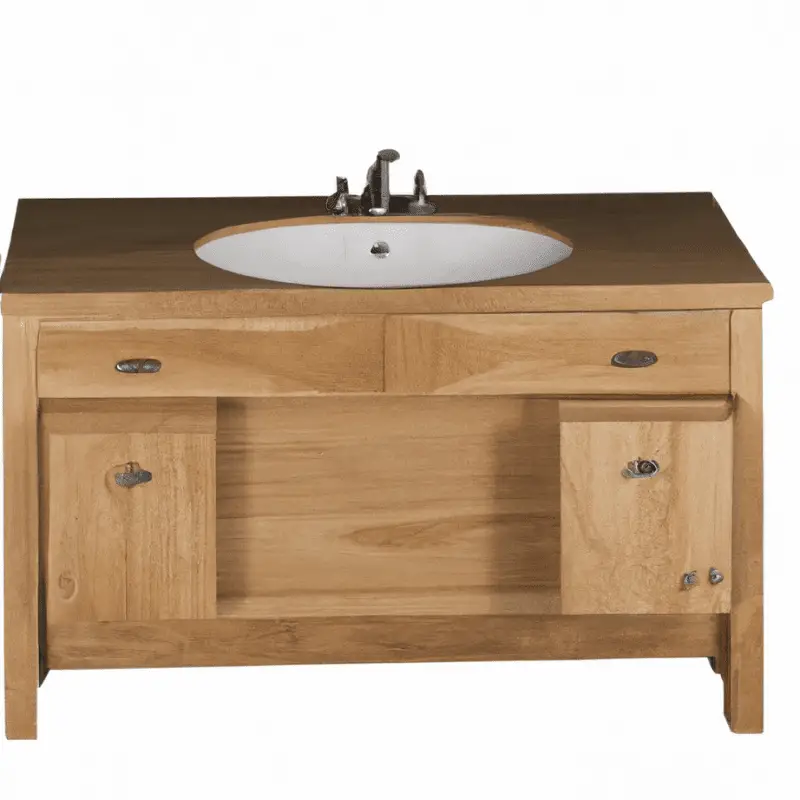
Oak is a timeless wood that has been utilized in making furniture for centuries. Not only is it incredibly strong and resilient, but it’s also resistant to scratches and dents. This makes an oak vanity a great choice for bathrooms with frequent foot traffic. With proper care and maintenance, an oak vanity can easily last for decades without losing its beauty or worth.
The intricate wood grain pattern is truly unique and adds a timeless charm and character to the piece; it will never go out of fashion and will make an excellent addition to your home.
Oak bathroom vanities are great for bathroom furniture with their superior density and corrosion resistance, leaving other woods in the dust.
Cons
2. Engineered Wood
Engineered wood often referred to as man-made wood is a type of derivative wood constructed by combining different components of wood together with adhesives or glue. These components include particles, boards, fibers, and veneers.
This innovative material offers the perfect blend of strength, durability, resistance to moisture, and sustainability.
4 Best Engineered Wood for Bathroom Vanity
1. MDF (Medium-Density Fibreboard)
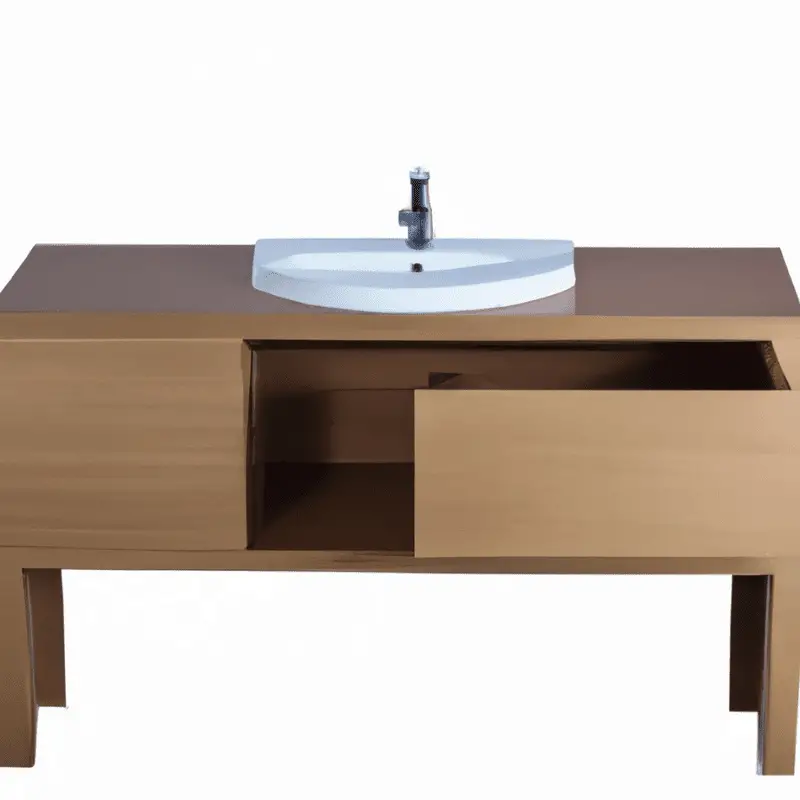
MDF or Medium-Density Fiberboard is a type of engineered wood that offers both durability and versatility. It’s made by breaking down softwood fibers and then recombining them with resin, creating a material that is resistant to moisture, warping, and changing temperatures. And with proper sealing, it can even withstand the occasional splash or spill in bathrooms.
MDF wood bathroom vanity is also a budget-friendly option compared to solid wood vanity. It’s a cost-effective way to achieve the same look and feel as solid wood without breaking the bank. With proper care and maintenance, an MDF vanity can last just as long as one made of solid wood.
Cons
2. HDF (High-Density Fibreboard)
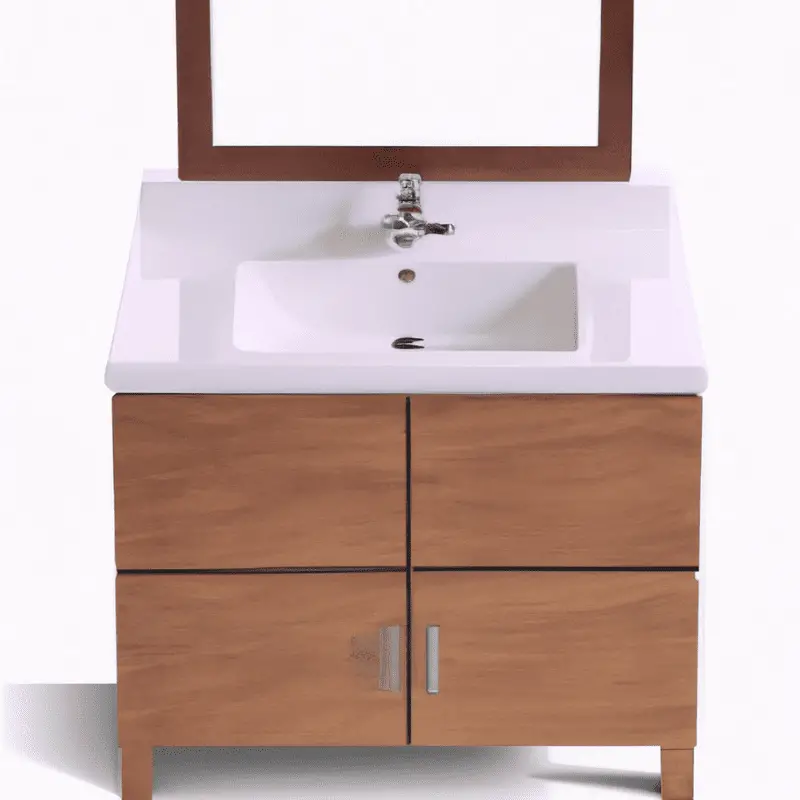
Those looking for a more economical but still long-lasting option compared to solid wood can turn to HDF Wood. Not only is it durable and long-lasting but it also offers a unique appearance that will elevate the look of your bathroom.
HDF wood is a high-density fiberboard which means it is harder than MDF and is made from compressed wood fibers that are then treated. It is resistant to warping, shrinking, and expanding; making it the perfect choice for high-moisture environments like bathrooms.
But it’s not just the durability that makes HDF wood a great choice for your bathroom vanity. It can be painted, stained, or even textured to match the existing design of your bathroom to add warmth and character to the space.
Don’t settle for a generic, standard bathroom vanity. Make a statement with HDF wood and create a bathroom that truly reflects your personal style.
Cons
3. Plywood
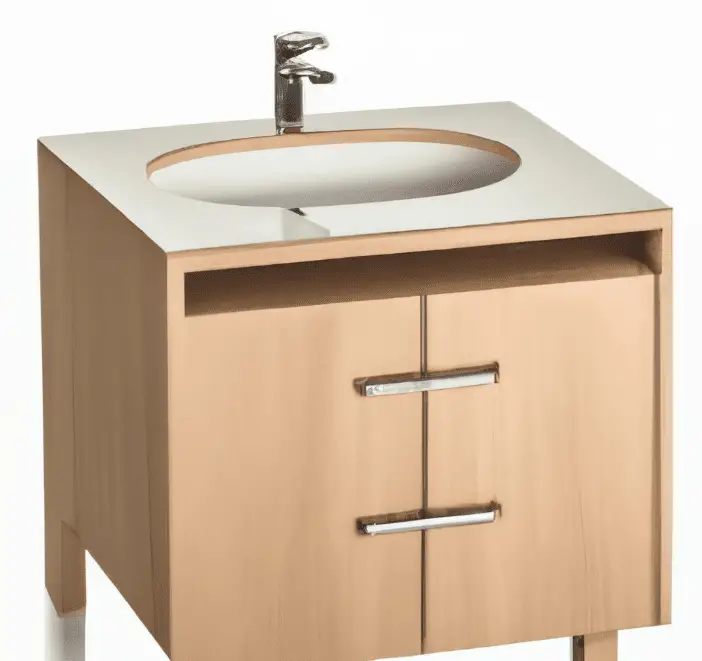
Plywood is made up of multiple layers of veneers or thin sheets of wood that are glued together with the grains running in perpendicular directions which creates a sturdy and stable board that’s perfect for all sorts of projects.
This seemingly ordinary material is ready to save the day and elevate your bathroom to new heights. With regard to bathroom vanities, plywood makes a huge difference and is truly revolutionary. It’s versatile and affordable and can be used to create everything from furniture to flooring.
To ensure durability in areas of sustained moisture and water exposure, BWP-grade plywood is the ideal choice.
Cons
4. Particle Board
Particle board is manufactured by breaking down wood into small particles, usually not more than 2 mm. This sawdust is bonded together with a strong adhesive. Thus it forms a reliable and resilient panel that serves many purposes.
The density of the sheets also plays a significant role in the strength of the particle board. The denser the sheets, the stronger the board.
However, it should be noted that particle wood is susceptible to damage. Despite this, it remains a viable option for those looking to achieve a balance between cost and functionality in their bathroom renovation.
Cons
How Do You Waterproof a Wooden Bathroom Vanity?
Waterproofing your wooden bathroom vanity is a necessary step in ensuring the longevity and durability of your item. Not only does it protect the wood from water damage but it also prevents the growth of mold and mildew. Here are a few ways to waterproof your wooden bathroom vanity:
1. By using a Sealant
Use a high-quality sealant specifically designed for wood. This will create a barrier between the wood and water, preventing it from absorbing moisture. Be sure to apply the sealer evenly and in multiple thin coats for maximum effectiveness.
2. Oil
You have three oil choices for waterproofing your wood: linseed, walnut, or tung oil. Each one provides a reliable level of protection that can extend the life of your wood.
First, start by smoothing the rough surface with sandpaper. Thoroughly clean your vanity to remove any dirt or grime. Apply the oil evenly and generously with a soft-bristle brush making sure to cover every inch of the wood. Allow the oil to penetrate the wood for at least 4 hours before applying a second coat.
Not only will this technique protect your vanity from water damage, but it will also bring out the natural beauty and grain of the wood.
3. Stain & Sealer
By using a combination of stain and sealer you can easily waterproof your vanity and give it a beautiful finish at the same time.
Oil-based stain-sealant combinations are best used for bathroom vanities.
Key Takeaways
Deciding on the ideal wood for your bathroom vanity is a major decision that impacts the entire look and feel of your space. We’ve highlighted different options; their advantages and disadvantages, and what factors should be taken into consideration before selecting one. Ultimately, it’s up to you to determine which type of wood is right for you.
Remember, durability, water resistance, and appearance are key factors to consider when making your decision. The extra effort and care you put into selecting the perfect wood will pay off in the long run with a stunning and functional bathroom vanity that you’ll be proud to show off.
